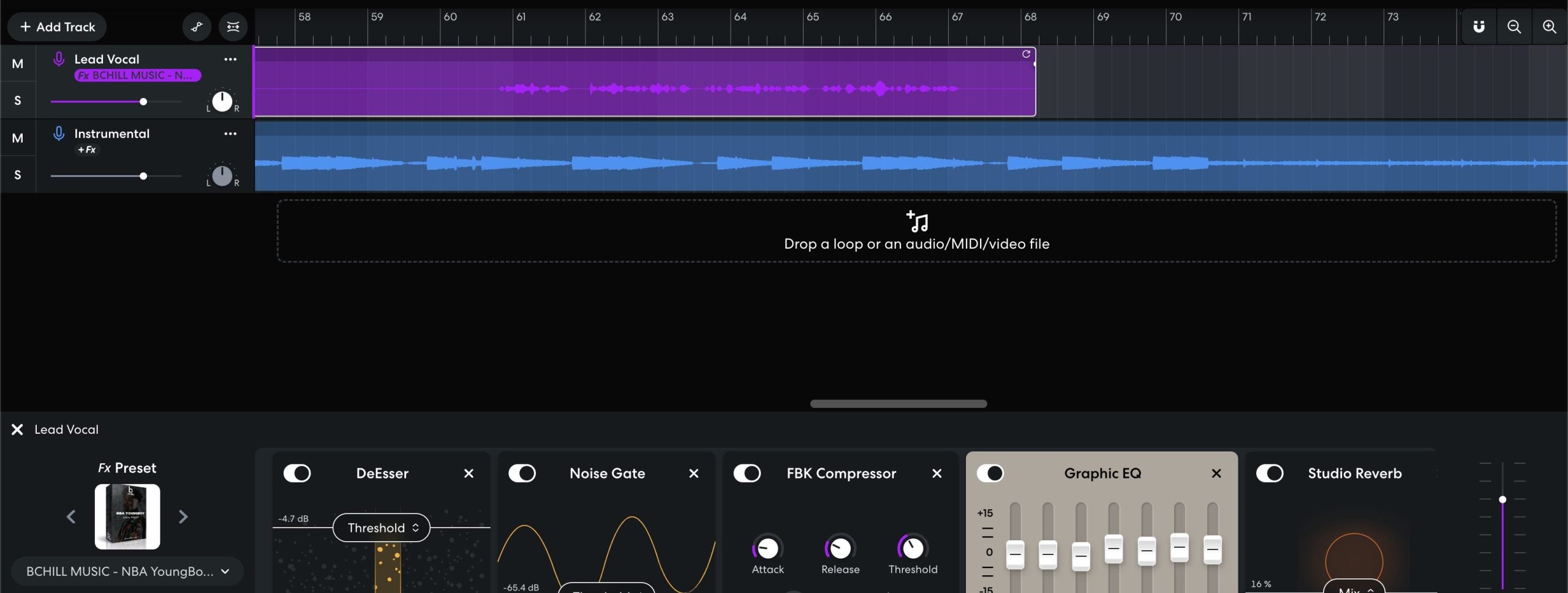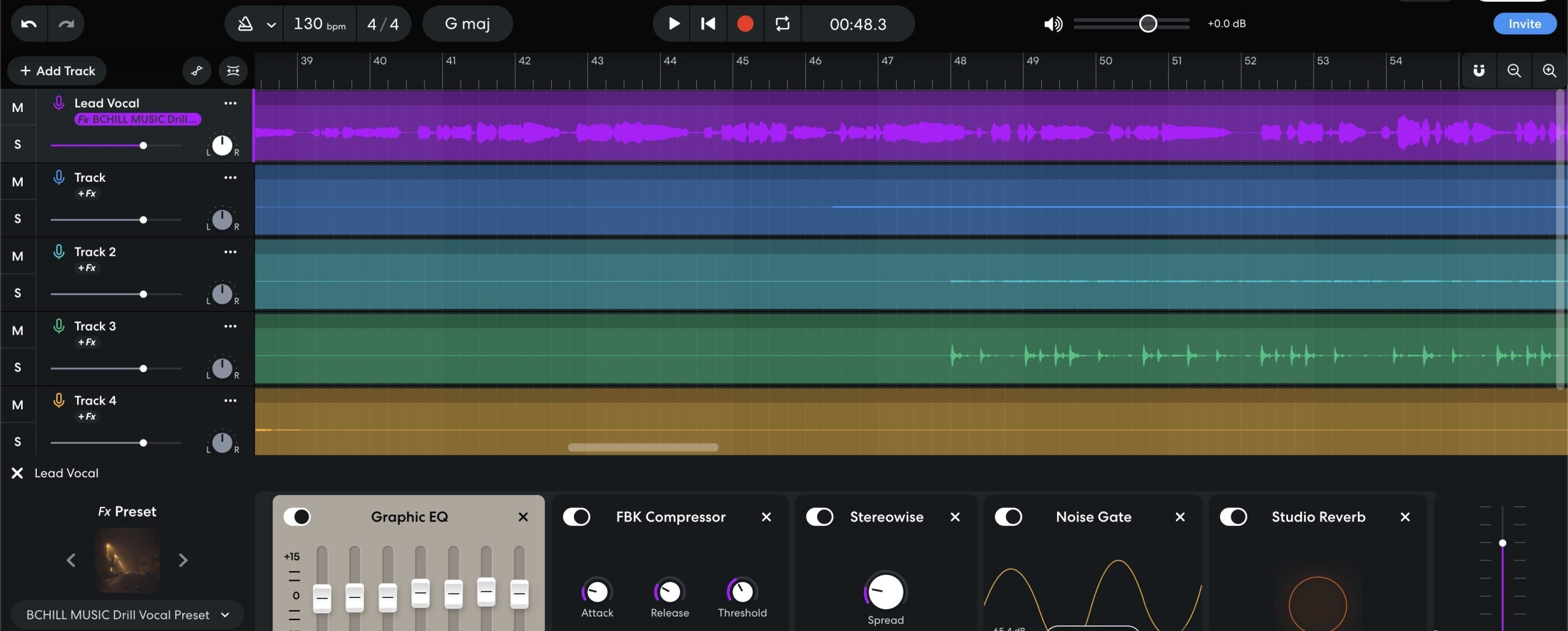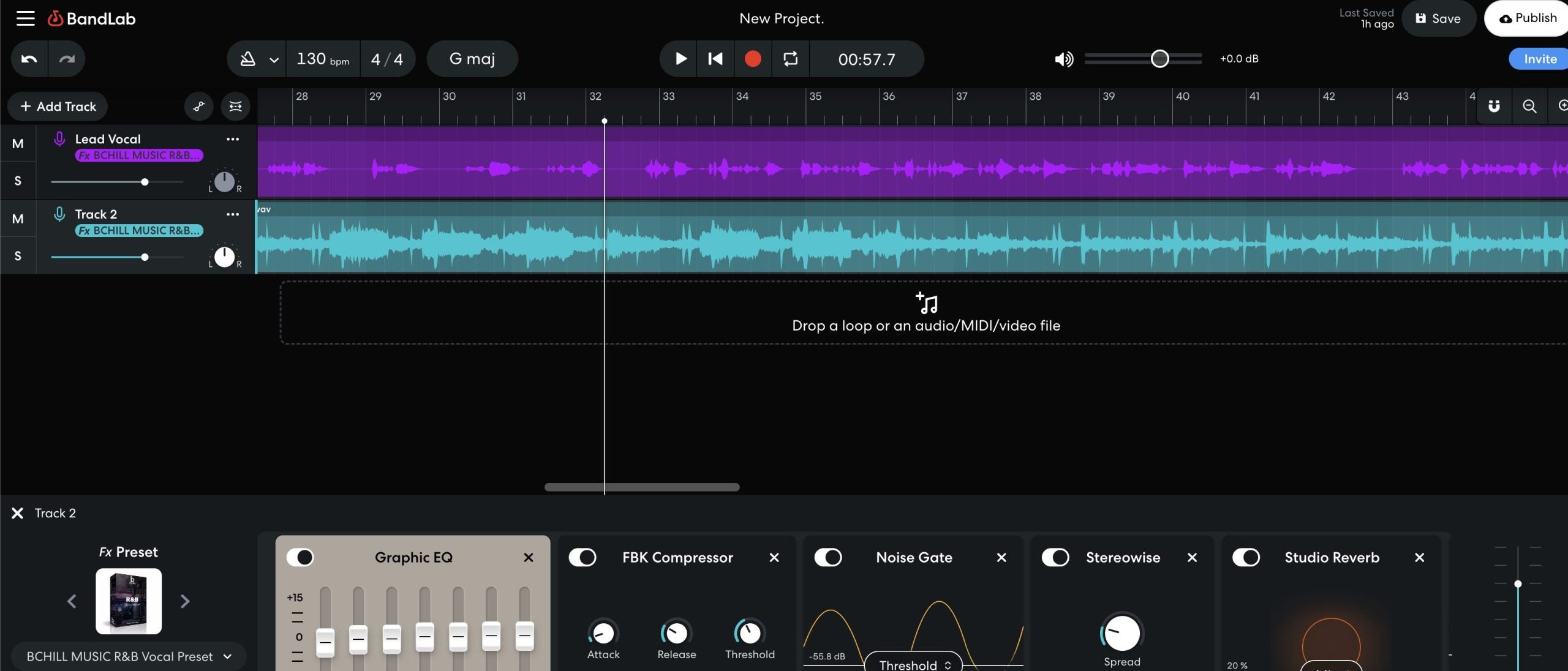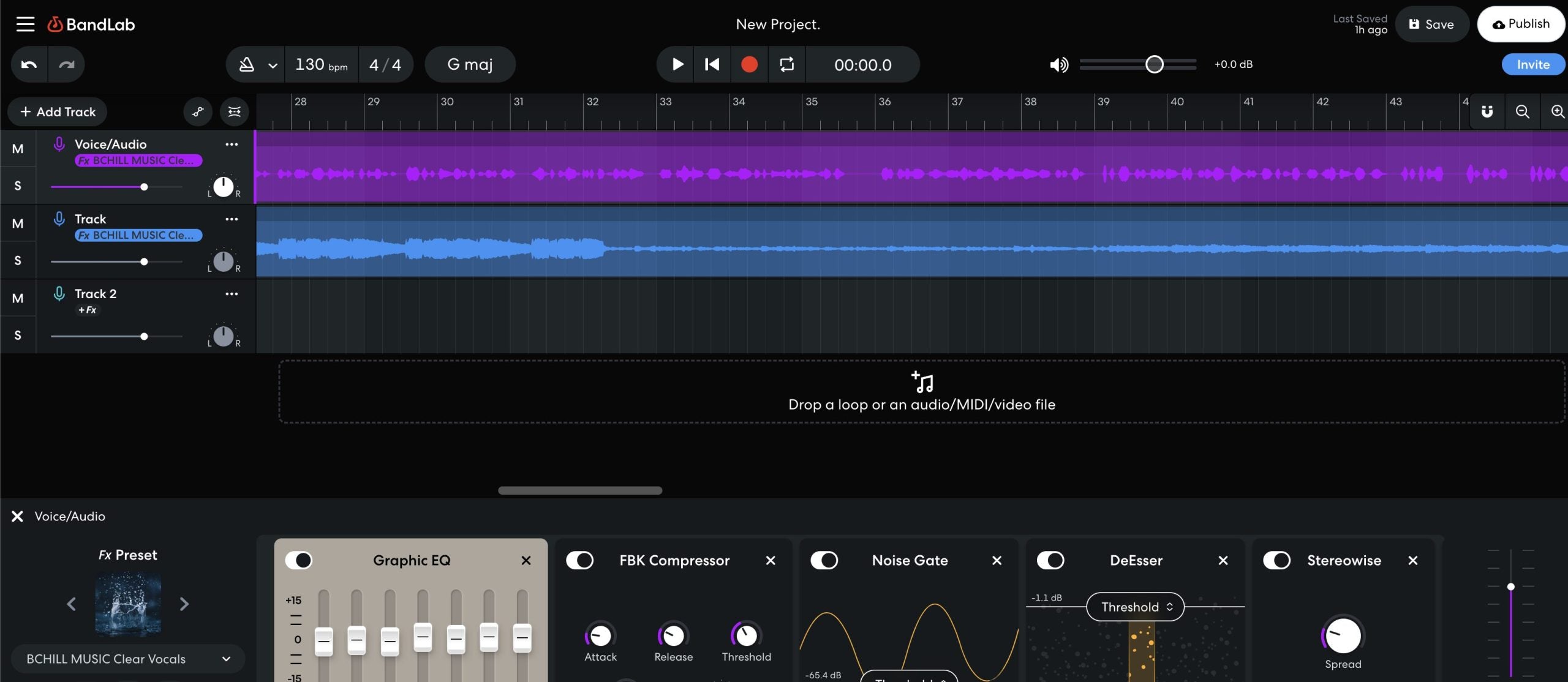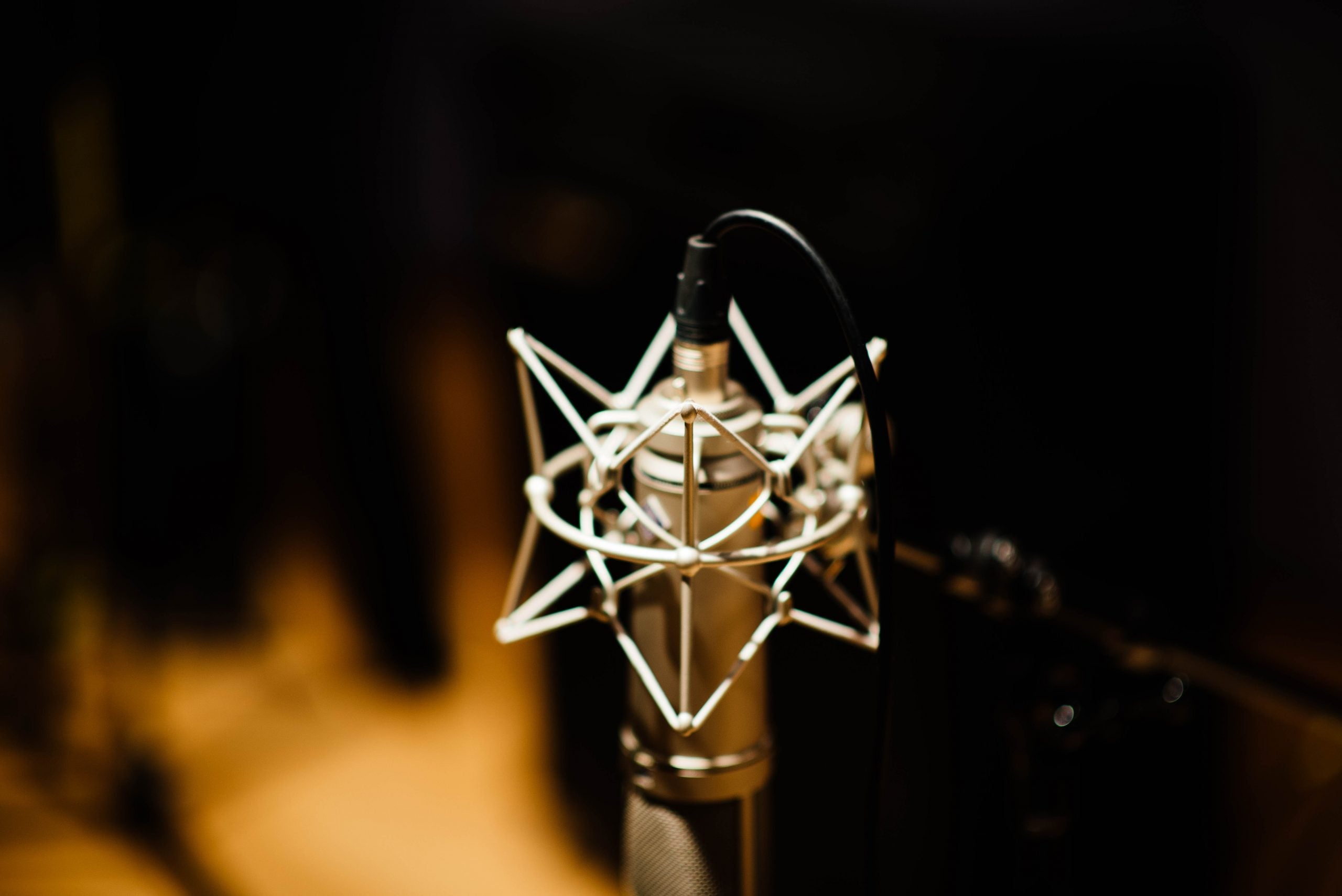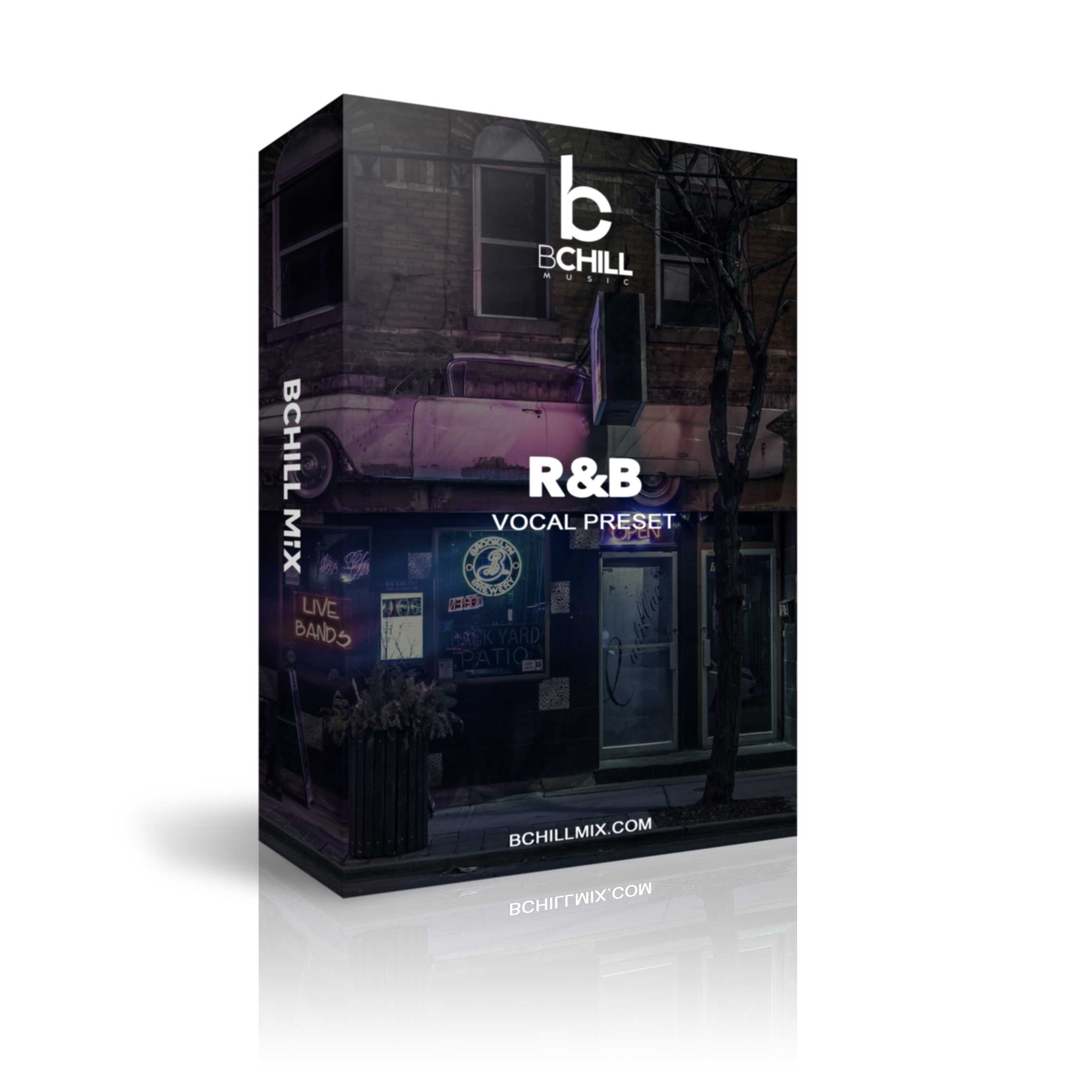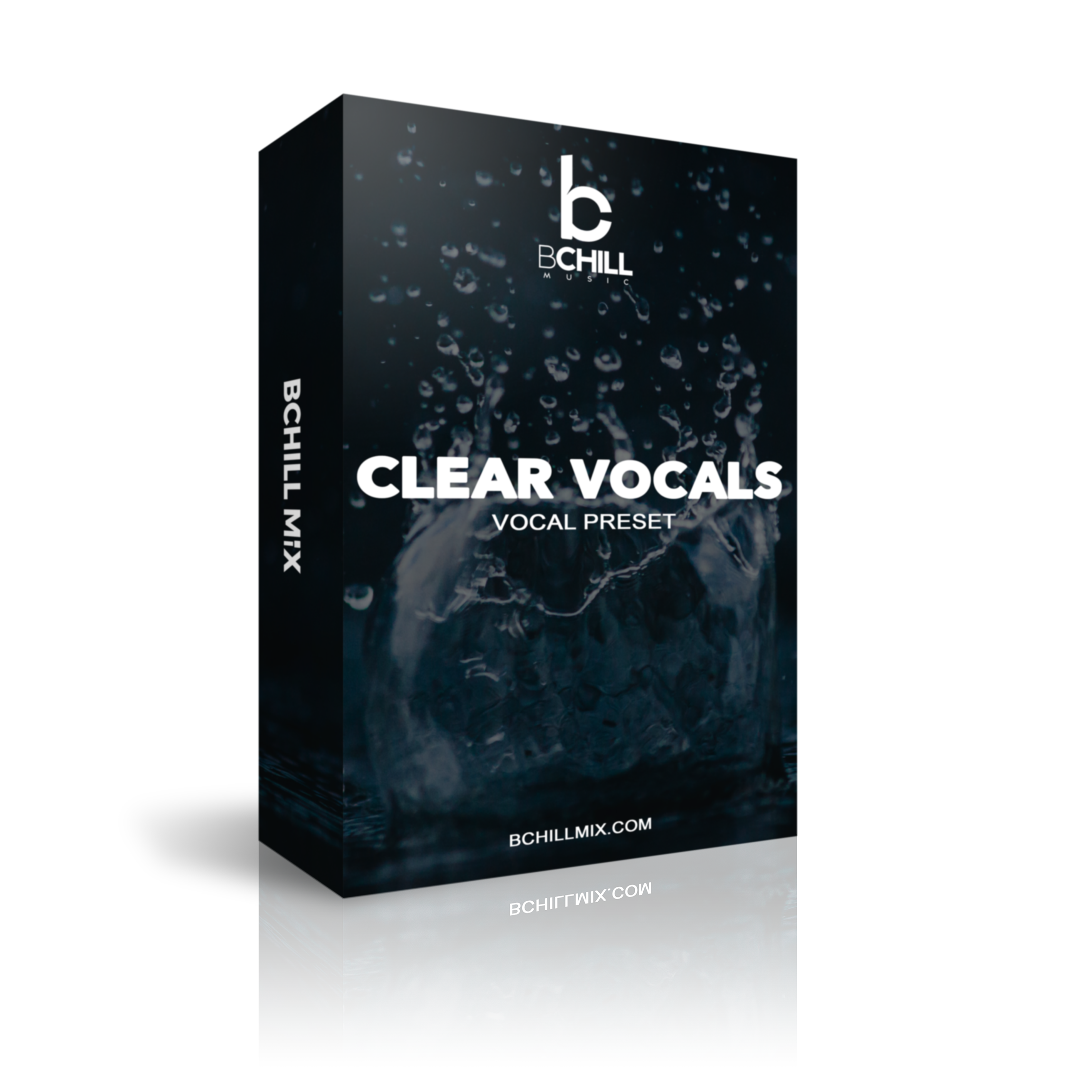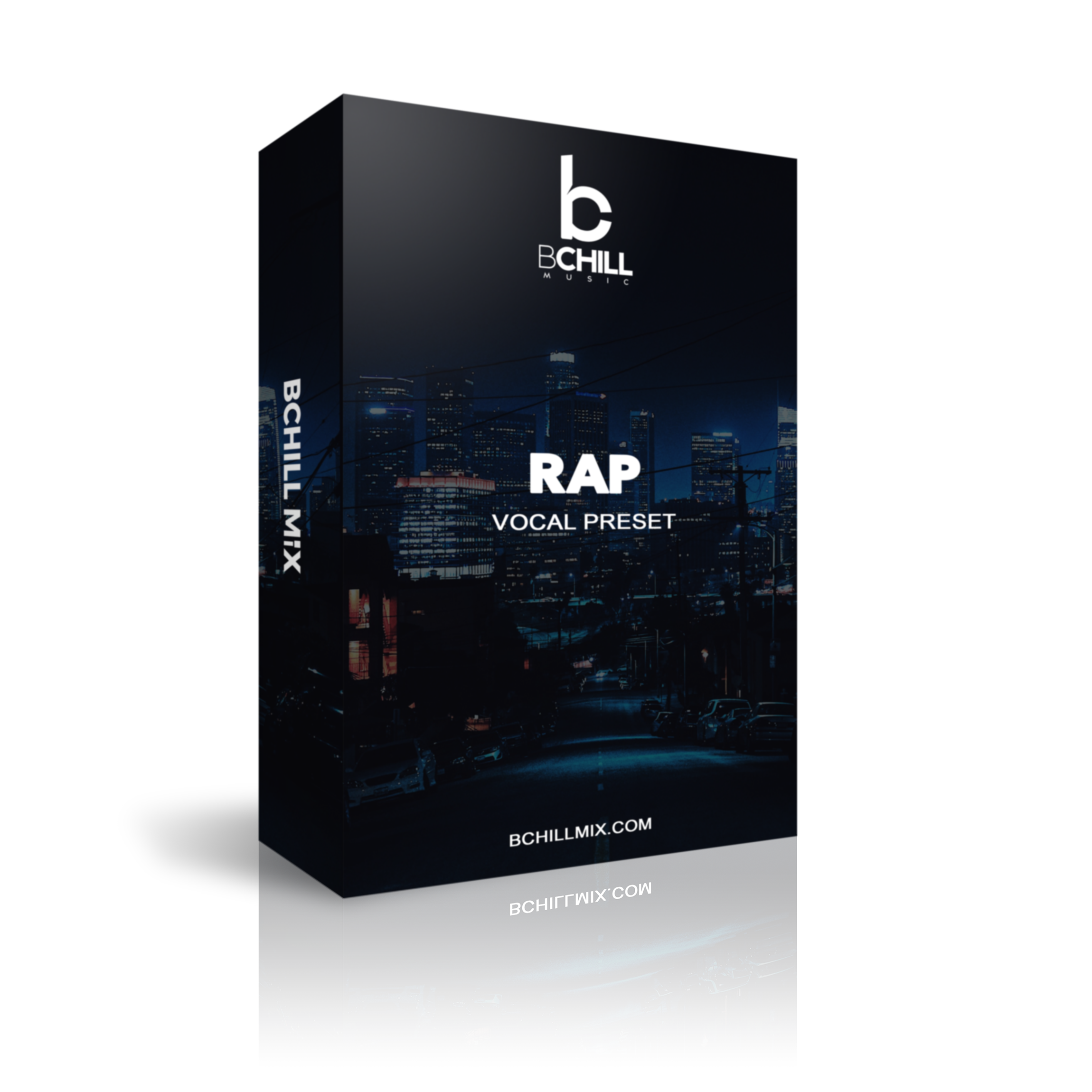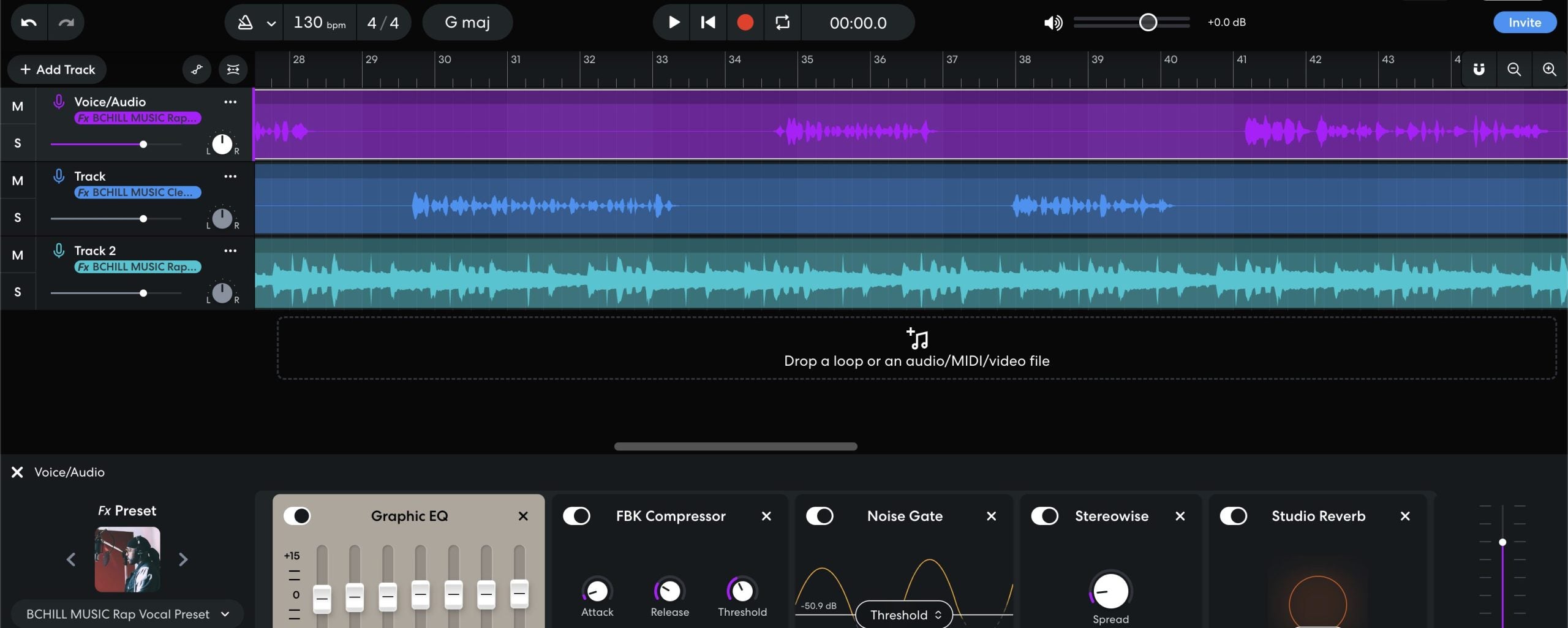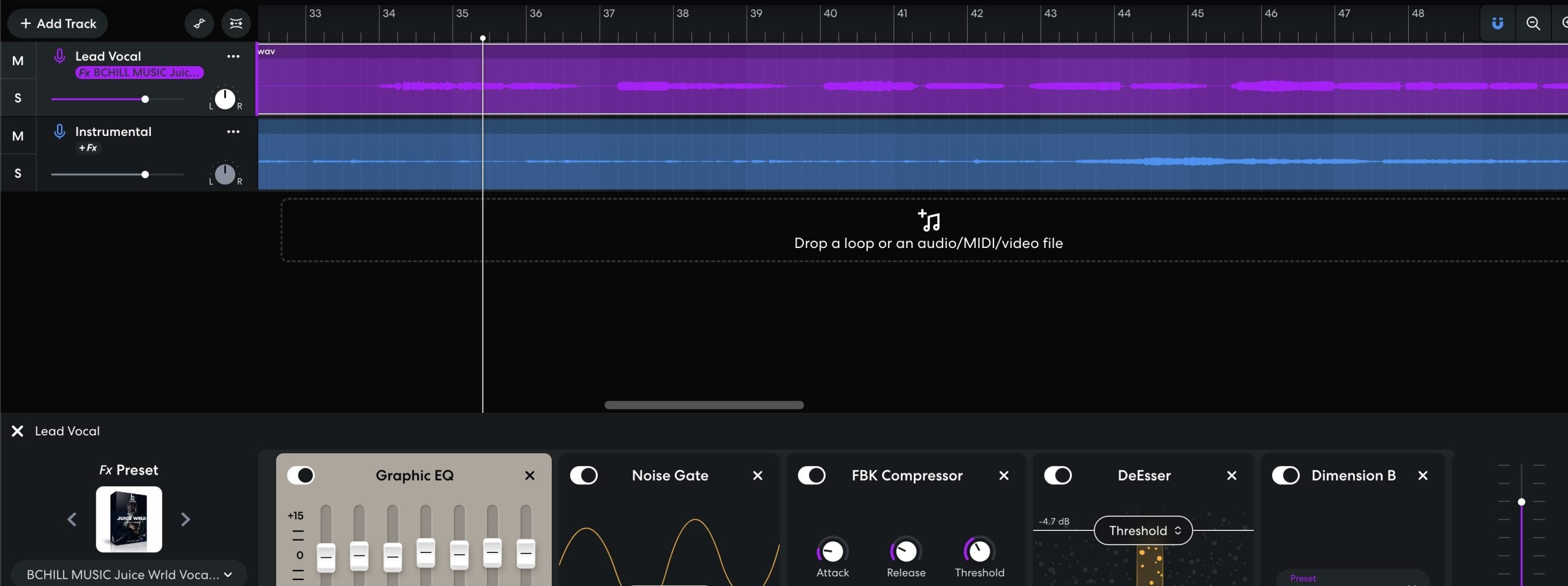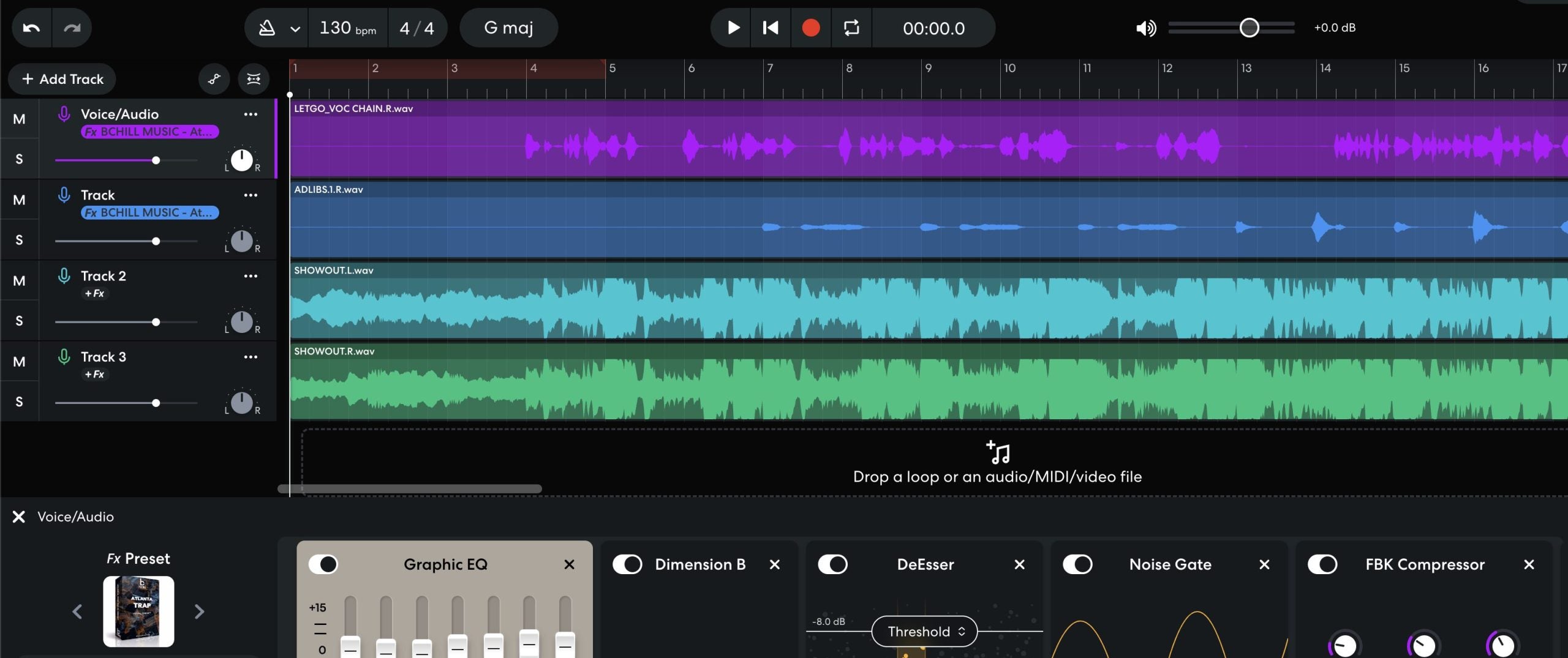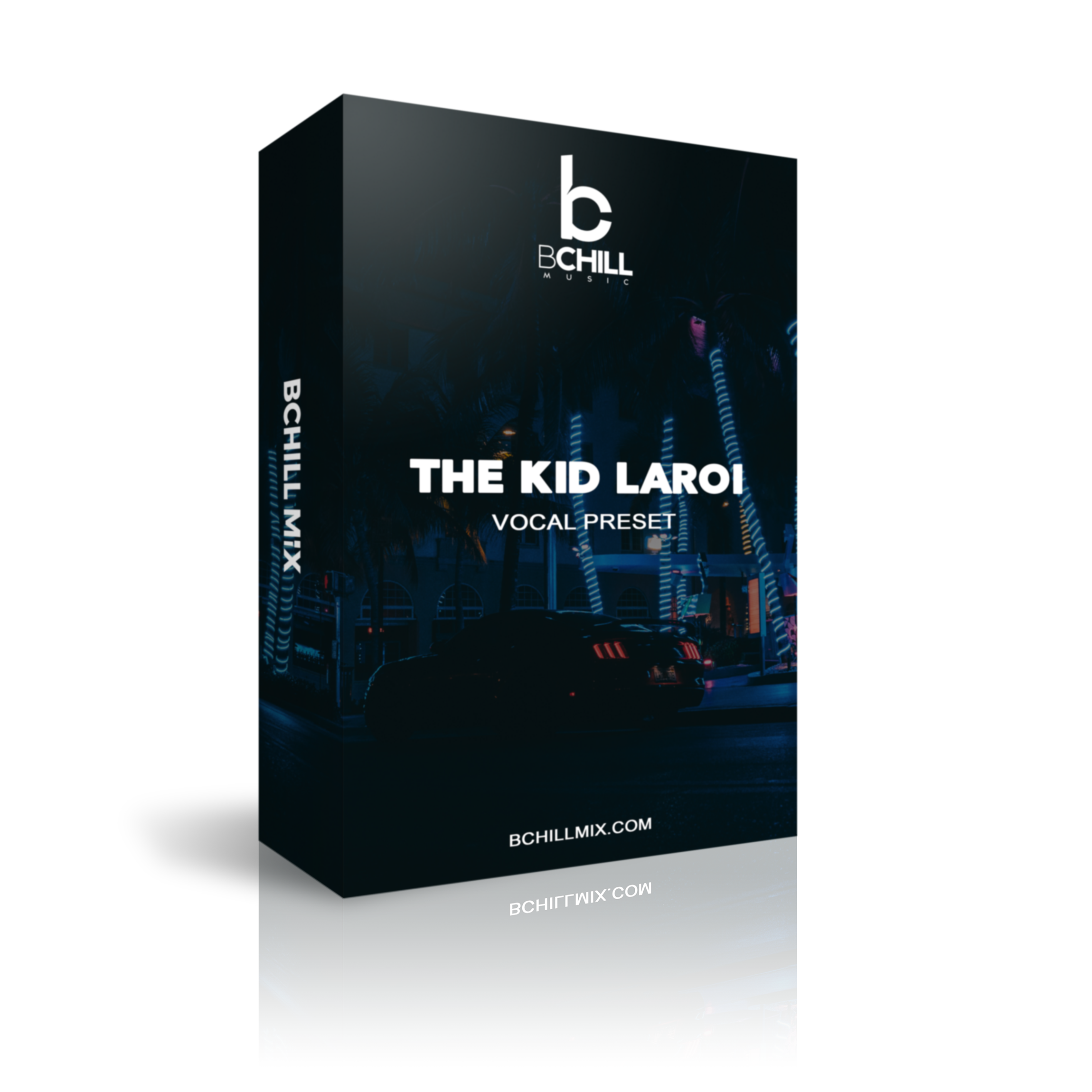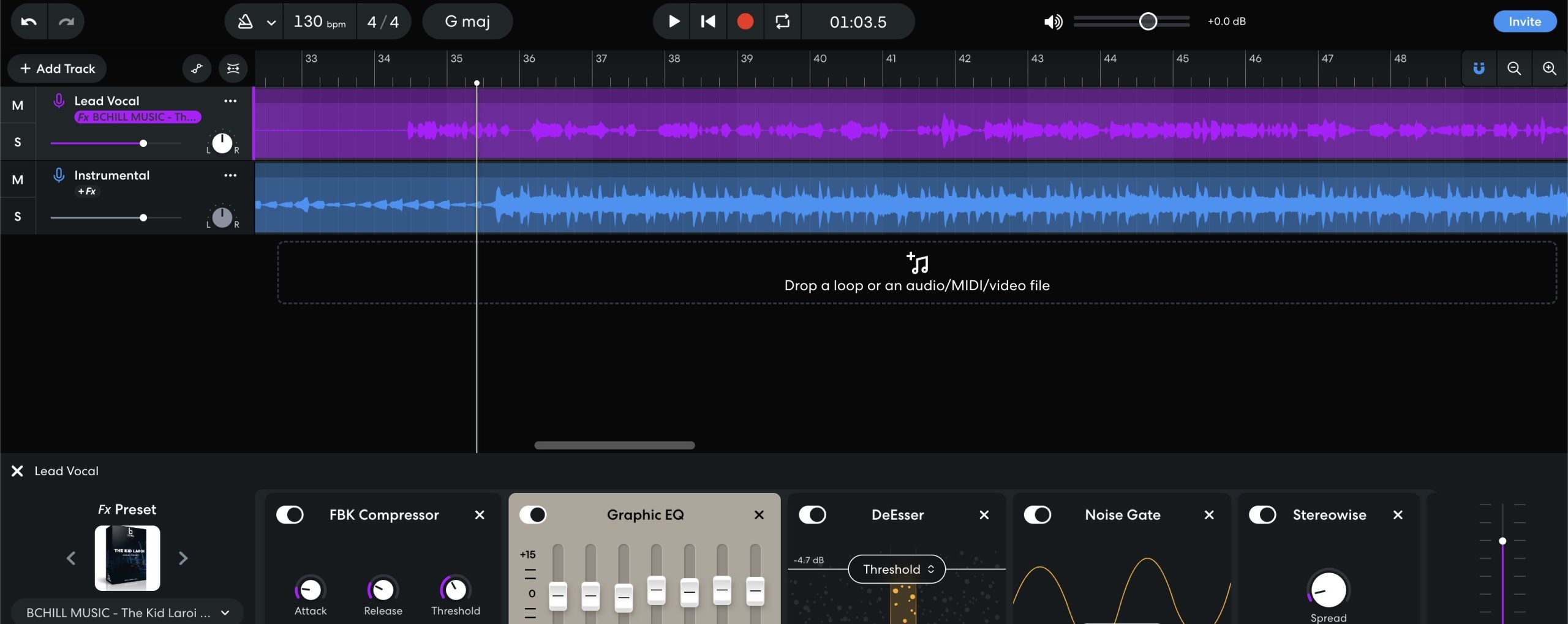Presets de BandLab
Tipo: Preset Vocal
Preset Vocal R&B BandLab
Tipo: Preset Vocal
Preset de Voces Claras BandLab
Tipo: Preset Vocal
Preset Vocal de NBA YoungBoy para BandLab
Tipo:
Preset de Voz de Rap BandLab
Tipo: Preset Vocal
Preset Vocal de BandLab de Juice Wrld
Tipo: Preset Vocal
Preset Vocal Trap de Atlanta BandLab
Tipo: Preset Vocal
Preset Vocal de The Kid Laroi para BandLab
Tipo:
Preset Vocal de Taladro BandLab
Créditos de la Industria

Westside Boogie

Shontelle

Jarren Benton

DJ Tunez

Vory

Caskey

Rittz

Nia Riley

Eugy

Q Parker
Acerca del Ingeniero

Acerca del Ingeniero
¡Hola! Soy Byron Hill, un productor musical profesional e ingeniero de mezcla con más de 15 años de experiencia, basado en Atlanta, GA. He trabajado con miles de clientes en todo el mundo en una amplia gama de géneros, desde artistas independientes hasta talentos de grandes sellos. Mis créditos incluyen trabajo con Westside Boogie, Vory, Shontelle, DJ Tunez, Jarren Benton y Ritz, así como creadores y marcas como Daryl Mayes, SeanDoesMagic y Chubbies Clothing.
A lo largo de los años, he desarrollado un oído entrenado para crear cadenas vocales que ofrecen un sonido limpio, equilibrado y profesional, sin importar el género o DAW. Cada preset en esta colección está construido con el mismo objetivo: ayudarte a moverte más rápido, sonar mejor y dar vida a tu voz con claridad, confianza e intención.
Escucha nuestro Trabajo
R&B
Antes de
Después de
Rap
Antes de
Después de
Popular
Antes de
Después de
Alma
Antes de
Después de
Roca
Antes de
Después de
Latino
Antes de
Después de
Preguntas frecuentes
¿Son estos ajustes amigables para principiantes?
¿Son estos ajustes amigables para principiantes?
Sí — cada preajuste está optimizado para funcionar al instante. Solo arrastra, suelta y comienza a grabar. Ya sea que estés comenzando o ya grabando regularmente, estos preajustes te ayudan a estar listo para mezclar el sonido de inmediato.
¿Necesito algún complemento de terceros para usar estos ajustes preestablecidos?
¿Necesito algún complemento de terceros para usar estos ajustes preestablecidos?
Ofrecemos tanto versiones de plugin de stock (no se requieren plugins adicionales) como versiones premium (que utilizan herramientas de terceros estándar de la industria). La descripción del producto enumera claramente cualquier plugin requerido.
¿Funcionará esto con BandLab?
¿Funcionará esto con BandLab?
Sí — cada preajuste está construido específicamente para tu DAW. Simplemente selecciona tu software del menú de preajustes antes de la compra.
¿Puedo usar estos para cantar, rapear o ambos?
¿Puedo usar estos para cantar, rapear o ambos?
¿Qué tan rápido recibo mis archivos después de la compra?
¿Qué tan rápido recibo mis archivos después de la compra?
Explicación y características de los presets vocales de BandLab
I. Introducción a los presets vocales de BandLab
Si grabas o mezclas en BandLab—en móvil o en el navegador—los presets vocales bien construidos te ofrecen un sonido repetible sin tener que reconstruir la misma cadena en cada sesión. Un preset carga un camino completo (EQ, compresión, de-essing, ambiente y más) para que puedas capturar ideas rápidamente y mantener un tono consistente desde la demo inicial hasta el lanzamiento. En BCHILL MIX, el objetivo es simple: dicción clara, dinámicas controladas, baja latencia durante la grabación y un acabado que se traduce en auriculares, monitores y teléfonos. Explora nuestros últimos presets vocales de BandLab para encontrar un punto de partida que se ajuste a tu estilo.
II. ¿Qué son los presets vocales en BandLab?
En BandLab, un preset vocal es una cadena FX guardada—un orden conocido de procesadores con configuraciones iniciales sensatas para voces modernas. Una cadena equilibrada a menudo incluye:
- Un filtro pasa alto suave más pequeños movimientos de EQ quirúrgicos para eliminar el retumbo o la dureza.
- Uno o dos compresores para suavizar frases fuertes/suaves sin bombeo.
- Un de-esser para que “s” y “t” se mantengan suaves después de aclarar.
- Saturación/excitador opcional para presencia y definición.
- Reverb de placa corta o de sala y un delay ajustado al tempo para un espacio que no lave la letra.
Puedes cargar un preset en una sola pista (Voz Principal), reutilizarlo en Dobles y Armonías, o poner procesamiento correctivo en la pista y pulido creativo en un bus vocal. Trata los presets como puntos de partida: graba a través de ellos, luego ajusta umbrales, cantidades de EQ y niveles de envío para tu voz, micrófono y canción. Cuando encuentres un punto dulce, guárdalo como tu propio preset personalizado para que los proyectos futuros se abran con el tono exacto que prefieres.
III. Por qué usar presets (Beneficios y cuándo ayudan)
- Velocidad: Salta la configuración repetitiva. Abre BandLab, elige tu preset, presiona grabar—crucial cuando la inspiración golpea o estás colaborando de forma remota.
- Consistencia: Una cadena calibrada mantiene el tono alineado a través de canciones y sesiones, por lo que los sencillos y EPs se sienten cohesivos.
- Enfoque: Con la plomería técnica manejada, puedes dedicar más tiempo a la interpretación, dobles/ad-libs y arreglos creativos.
- Traducción: Buenas cadenas mantienen las voces inteligibles en auriculares y teléfonos, así como en monitores de rango completo, por lo que las mezclas ásperas se transmiten bien.
- Baja fricción: Los presets reducen la sobrecarga de decisiones—especialmente útiles en móviles donde el espacio en pantalla es limitado.
Donde brillan: sesiones de escritura rápidas, colaboraciones remotas, creación de contenido (shorts/reels), tono consistente a lo largo de una serie de lanzamientos, y cualquier flujo de trabajo donde quieras pasar de la idea a la toma en minutos.
IV. Enfoques de Stock vs. Premium en BandLab
Los FX de BandLab están integrados, por lo que cada cadena BCHILL MIX en nuestra colección de Presets Vocales de BandLab utiliza efectos nativos que funcionan en el navegador y en dispositivos móviles—sin necesidad de complementos de terceros. Eso los hace portátiles y fáciles de compartir entre dispositivos.
Dentro de BandLab, “premium” simplemente significa una modelación de tono más detallada y balances específicos de género organizados para una vibra particular (por ejemplo, el golpe del trap frente a la suavidad del R&B). Si eres nuevo en los presets, comienza con una cadena limpia y versátil como un estilo de “Voces Claras”. Si ya conoces el sonido que deseas, elige una opción ajustada a un género como Preset Vocal de Trap de Atlanta (BandLab) o Preset Vocal estilo NBA YoungBoy (BandLab) y haz pequeños ajustes en lugar de reconstruir desde cero.
V. Instalación y Inicio Rápido (Web + Móvil)
A. Web (navegador)
- Crea o abre un proyecto; añade una pista de Voz/Audio.
- Abre FX en esa pista y carga tu preset (o abre el enlace del preset compartido, luego guárdalo en tu biblioteca).
- Graba una frase de prueba corta y establece la entrada para que los picos caigan por debajo del clipping; si la monitorización se siente retrasada, graba con una cadena ligera (EQ → compresión ligera → de-ess) y agrega pulido más tarde.
- Baja los umbrales del compresor hasta que las líneas fuertes se reduzcan en unos pocos dB sin bombeo audible. Si iluminas, revisita el de-esser para que las sibilantes se mantengan suaves.
- Usa envíos pequeños a un retraso sincronizado con el tempo y una placa corta; automatiza los niveles de envío para elevar los ganchos en lugar de aumentar los efectos de inserción.
B. Móvil (iOS/Android)
- Crea una pista de Voz/Audio y toca FX.
- Carga tu preset desde Mis Presets (o abre el enlace compartido y guárdalo).
- Establece la ganancia de entrada con una toma de prueba corta; apunta a un nivel saludable sin picos rojos.
- Graba con una cadena ligera para comodidad; expande la cadena durante la mezcla.
- Guarda tu versión personalizada como un nuevo preset para que puedas reutilizarla más tarde.
Consejos rápidos de ganancia: Graba a 24 bits con picos alrededor de la mitad del medidor; evita el clipping en la interfaz (no se puede arreglar). Si la ganancia de maquillaje empuja los niveles demasiado alto, recorta la salida del clip o efecto en lugar de golpear el siguiente procesador. Mantén los picos de la mezcla rough sensatos para que no estés persiguiendo el volumen mientras grabas.
VI. Estilos y Casos de Uso (Rap, R&B, Pop, Canto/Claro, Hyperpop)
Voz principal de rap (mejores preajustes de BandLab para rap): Apunta a una presencia contundente con dinámicas ajustadas. Usa dos compresores más ligeros en serie para que los transitorios se mantengan vivos; enfoca la presencia en los medios altos; agrega un slap corto o una placa pequeña para energía sin lavado. Mantén los ganchos más amplios automatizando un poco más el envío de retraso en las líneas del coro. Si tu entrega es muy centrada, un doblador sutil puede agregar ancho.
Rap melódico / Atlanta trap: Mantén el extremo superior brillante pero suave. Un toque de saturación agrega mordida; síguelo con de-ess para que las consonantes no suenen espumosas. Capa las ad-libs con un filtro pasa-altos ligeramente más alto y un poco de de-ess extra para mantener las capas ordenadas. Para resultados rápidos, comienza con el Preset Vocal de Atlanta Trap para BandLab, luego aumenta un poco la retroalimentación del retraso en los ganchos para un espacio moderno.
R&B / Soul (preajustes de canto): Apunta a un tono sedoso y una calidez controlada en los medios bajos. Usa un ataque/liberación más suave, un estante de aire suave y una ambientación más amplia. Un pre-retraso más largo puede agregar profundidad sin enmascarar las palabras. En los fondos, usa retrasos ampliados en estéreo y un filtro pasa-altos para prevenir la neblina en los medios bajos. Si tu micrófono es brillante, corta un poco de dureza antes de la compresión para que el compresor no reaccione en exceso.
Pop: El pop moderno se beneficia de un levantamiento y pulido de buen gusto. Agrega un estante alto y mantén la sibilancia bajo control. Usa retrasos sincronizados con el tempo para ancho; una reverberación de sala muy corta puede “pegar” la voz sin sonar húmeda. Compara decisiones a un volumen igualado—“más fuerte” a menudo suena “mejor”, así que iguala el nivel antes de juzgar. En arreglos densos, esculpe 2–4 kHz con cuidado para que las palabras se mantengan inteligibles.
Estilos con mucha afinación (AutoPitch): Para drill, rap melódico, hyperpop y ciertos ganchos pop, combina tu preajuste vocal con el AutoPitch de BandLab. Elige la clave/escala correcta, establece una cantidad de reafinación moderada para una afinación natural o súbela más para el tono robótico característico, y vuelve a verificar los envíos de retraso/reverb para que permanezcan claros después de la afinación.
Canto limpio / podcast / conversación: Prioriza la inteligibilidad y el control del ruido. Usa compresión transparente, de-ess moderado y solo un toque de ambiente corto si lo seco se siente antinatural. La técnica importa: una distancia estable de boca a micrófono, un filtro anti-pop y una habitación tranquila superarán los efectos pesados. Si tu habitación es viva, prueba un suave desruido/desreverb antes de EQ y compresión.
Hyperpop / experimental: Aumenta el realce brillante, el color estilo formante y los retrasos rítmicos bloqueados por tempo. Mantén un de-ess de seguridad después de realzar. Automatiza húmedo/seco y lanzamientos de retraso para crear movimiento alrededor de frases clave. Si los transitorios se sienten apagados después de una afinación pesada, añade un pequeño excitador antes del de-esser para recuperar el golpe.
Soluciones rápidas para problemas comunes:
- “s” o “t” ásperos: reduce el realce brillante ligeramente y/o ajusta el de-esser para que solo apunte a los sibilantes.
- Capas turbias: dobles/armonías de paso alto un poco más alto que la principal; usa un poco más de de-ess en las capas.
- Demasiado espacio: genial en solitario, desordenado en contexto—comienza bajo en los envíos y automatiza hacia los ganchos.
- Latencia al grabar: graba con una cadena ligera, añade realzadores después de las tomas.
- Voces enterradas en el ritmo: recorta instrumentos competidores alrededor de 2–5 kHz o sube el bus vocal ~1 dB en los coros.
VII. Plantillas de Grabación vs. Preajustes (Flujo de Trabajo)
Los preajustes vocales dan forma al tono y la dinámica; las plantillas de grabación proporcionan el diseño completo de la sesión: pistas pre-nombradas (Principal, Dobles, Armonías, Ad-libs), codificación por colores, enrutamiento, conceptos básicos de mezcla de referencia y envíos listos. Muchos creadores mantienen ambos:
- Una plantilla simple para que cada proyecto se abra organizado.
- Un pequeño conjunto de preajustes—Brillante, Neutro, Suave—para que cada nueva canción comience con el tono más cercano.
Si alternas entre el teléfono y la computadora, guarda tu preajuste en tu biblioteca de BandLab para que la misma cadena te acompañe. Para mezclas más profundas, prueba un flujo de trabajo de bus: coloca el procesamiento correctivo básico en la pista (EQ/Comp/De-ess) y el pulido creativo en un bus vocal (excitador, compresión de pegamento, ambiente). Eso mantiene la pista principal limpia y facilita levantar los coros ajustando solo unos pocos controles de bus. Explora herramientas relacionadas en diferentes DAWs en la completa colección de Preajustes Vocales siempre que te expandas más allá de BandLab.
Última actualización: agosto de 2025 · Autor: Byron Hill (BCHILL MIX)
Guía Visual: Ejemplos de Cadena Vocal de BandLab
Explora cadenas calibradas con EQ, dinámica, control de sibilancia, ambiente y AutoPitch. Usa estos como referencias rápidas mientras grabas y mezclas.
